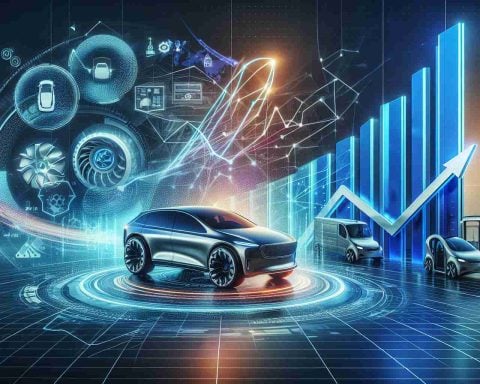Revolutionary innovation is on the horizon for electric vehicles! Rivian is seeking a patent for heated headlight lenses aimed at enhancing the performance of its electric pickups and SUVs in adverse weather conditions.
The automotive world has increasingly adopted LED headlights, known for their efficiency but lacking the heat of older HID or halogen types, which often kept lenses clear of snow and ice by melting accumulated moisture. To tackle this issue, Rivian filed a patent application with the United States Patent and Trademark Office on June 21, 2023, which was later published on December 26, 2024.
Within the patent, Rivian details a unique approach: incorporating a carbon nanotube layer on the headlight lens. This innovative design features a silver bus-bar heating element that warms the carbon nanotubes, effectively melting any ice or snow that settles on the lenses. The nanotubes, consisting of finely structured carbon atoms, are recognized for their excellent thermal conductivity, making them an ideal choice for this application.
As discussions on enhanced electric vehicle features like heated seats continue, Rivian’s focus on headlight technology highlights a critical aspect of driver safety—ensuring optimal visibility during challenging weather scenarios. However, it remains uncertain if these heated headlights will become a production reality, especially as Rivian gears up for launching the more affordable R2 electric SUV in 2026 and a new manufacturing plant in Georgia by 2028, bolstered by a significant federal loan.
Rivian’s Heated Headlight Patent: A Game-Changer for Electric Vehicles?
Introduction to Heated Headlights
Rivian, an up-and-coming electric vehicle (EV) manufacturer, is stepping into the spotlight with its groundbreaking patent for heated headlight lenses. This innovative technology aims to enhance driver safety and performance in tough weather conditions, potentially setting Rivian apart from its competitors in the electric vehicle market.
The Problem with Current Headlights
Most modern vehicles now feature LED headlights, primarily valued for their energy efficiency. However, these lights often fall short in inclement weather, lacking the heat generation of older halogen or HID headlights. Traditional headlights naturally melted snow and ice, maintaining optimal visibility in harsh conditions, a necessary feature for safe driving.
Rivian’s Innovative Solution
To address this challenge, Rivian’s patent application, filed on June 21, 2023, details a sophisticated design that utilizes a carbon nanotube layer on the headlight lens. This layer incorporates a silver bus-bar heating element, which heats the carbon nanotubes to melt ice and snow that may obstruct the lenses. The exceptional thermal conductivity of carbon nanotubes positions them as a brilliant choice for this application, ensuring that headlight functionality is maintained during adverse weather.
Potential Impact on Electric Vehicle Usage
The introduction of heated headlights in Rivian’s electric trucks and SUVs could have significant implications for vehicle usage in regions prone to severe weather. Enhanced visibility not only improves safety for drivers and passengers but also can mitigate risks for pedestrians and other road users.
Comparative Advantages Over Traditional Headlights
– Safety: Improved visibility in snow and ice.
– Efficiency: Utilizes power efficiently when compared to older headlight technologies.
– Innovation: Positions Rivian as a leader in integrating new materials and technologies into vehicle design.
– Reliability: Reduces the likelihood of operational issues due to obstructed lights.
Market Trends and Predictions
As electric vehicles gain traction globally, manufacturers are exploring innovative features that improve safety and user experience. Rivian’s approach aligns with trends focusing on enhanced driver convenience and safety technologies. Additionally, Rivian’s R2 electric SUV, set to debut in 2026, is poised to be an economical option while showcasing advanced features that may include these heated headlights.
Challenges Ahead
While the patent positions Rivian favorably within the competitive landscape, several factors could hinder the commercial viability of the heated headlight technology:
– Production Feasibility: Transitioning from patent to production requires significant investment and resources.
– Regulatory Approval: Any new technology in vehicles must undergo rigorous testing and approval processes.
– Market Competition: Rivian will need to stay ahead of competitors who may seek to replicate or innovate similar technologies.
Conclusion
Rivian’s pursuit of heated headlight lenses illustrates the company’s commitment to enhancing driver safety and pushing the boundaries of electric vehicle technology. As the automotive industry evolves and consumers prioritize safety features, Rivian’s innovations could become a pivotal point in its product lineup.
For updates on electric vehicle innovations and industry insights, visit Rivian’s official site.














